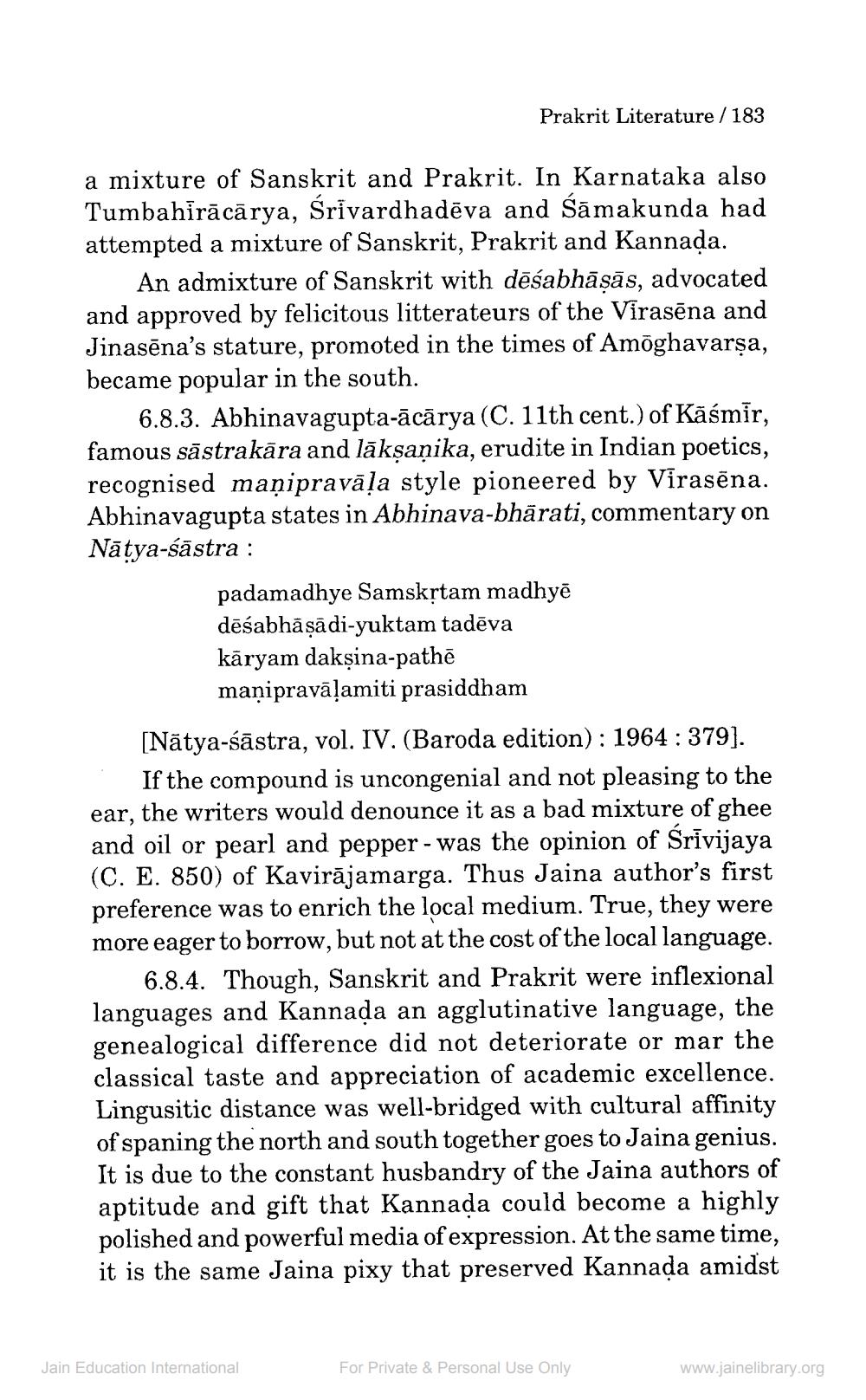________________
Prakrit Literature / 183
a mixture of Sanskrit and Prakrit. In Karnataka also Tumbahirācārya, Śrīvardhadēva and Śāmakunda had attempted a mixture of Sanskrit, Prakrit and Kannada.
An admixture of Sanskrit with deśabhāṣās, advocated and approved by felicitous litterateurs of the Virasēna and Jinasēna's stature, promoted in the times of Amōghavarṣa, became popular in the south.
6.8.3. Abhinavagupta-ācārya (C. 11th cent.) of Kaśmir, famous sastrakāra and lākṣaṇika, erudite in Indian poetics, recognised maņipravāla style pioneered by Virasena. Abhinavagupta states in Abhinava-bhārati, commentary on Natya-śästra :
padamadhye Samskṛtam madhye deśabhāṣādi-yuktam tadēva
karyam dakṣina-pathē manipravāļamiti prasiddham
[Natya-sastra, vol. IV. (Baroda edition): 1964: 379].
If the compound is uncongenial and not pleasing to the ear, the writers would denounce it as a bad mixture of ghee and oil or pearl and pepper - was the opinion of Śrīvijaya (C. E. 850) of Kavirajamarga. Thus Jaina author's first preference was to enrich the local medium. True, they were more eager to borrow, but not at the cost of the local language.
6.8.4. Though, Sanskrit and Prakrit were inflexional languages and Kannada an agglutinative language, the genealogical difference did not deteriorate or mar the classical taste and appreciation of academic excellence. Lingusitic distance was well-bridged with cultural affinity of spaning the north and south together goes to Jaina genius. It is due to the constant husbandry of the Jaina authors of aptitude and gift that Kannada could become a highly polished and powerful media of expression. At the same time, it is the same Jaina pixy that preserved Kannada amidst
Jain Education International
For Private & Personal Use Only
www.jainelibrary.org




